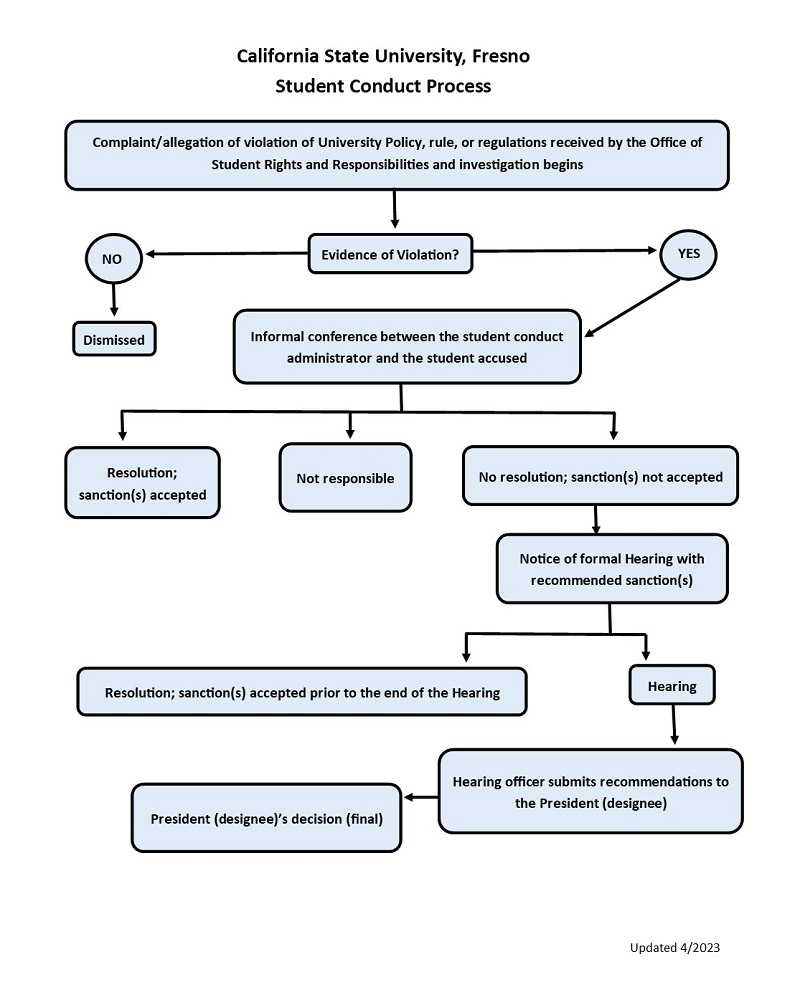Student Rights and Responsibilities
Procedures
CSU's Student Conduct Process outlines the procedures for resolution of a student conduct concern.
When the Office of Student Rights and Responsibilities receives a report of a possible infraction, the office notifies the student of the alleged misconduct and directs the student to schedule a meeting with the student conduct administrator. A student may confer with family members, or advisors at any stage in the informal or formal process.
Informal Disposition
At the initial meeting, the student is advised of his or her rights and informed of the evidence supporting the allegation. The student is encouraged to respond and participate in an open and honest discussion of the incident. Possible resolutions to the incident are usually determined at this time. In an informal disposition, the student must consent to any imposed sanction by signing a Resolution Agreement.
Formal Disposition
If an informal disposition cannot be achieved, formal procedures commence by providing the student with a written Notice of Hearing, including a link to CSU's Student Conduct Process describing the applicable procedures.
The formal hearing process provides a prompt, fair and impartial resolution of the incident. A Hearing Officer appointed by the President of the University conducts a closed, confidential proceeding. The student's attendance is not mandatory. Both the student and the student conduct administrator may offer evidence and question witnesses. The Hearing Officer may also question witnesses. An advisor may accompany the student and the student conduct administrator. Student disciplinary hearings are not courtroom proceedings and formal rules of evidence (e.g. hearsay exclusion) do not apply. Written minutes and/or audio recordings of the hearing are kept.
After the hearing, the Hearing Officer submits a written report to the University President or designee within ten days. This report contains factual findings and conclusions regarding whether or not the conduct constitutes a violation and, if so, recommendations regarding the sanction(s) to be imposed. A violation must be proved by a preponderance of the evidence: there is more evidence than not that the accused committed the violation. Any findings, conclusions, or recommendations must be based only upon evidence received at the hearing. The President or the designee then makes a final determination based on the report. The President's decision is final and may not be appealed.
